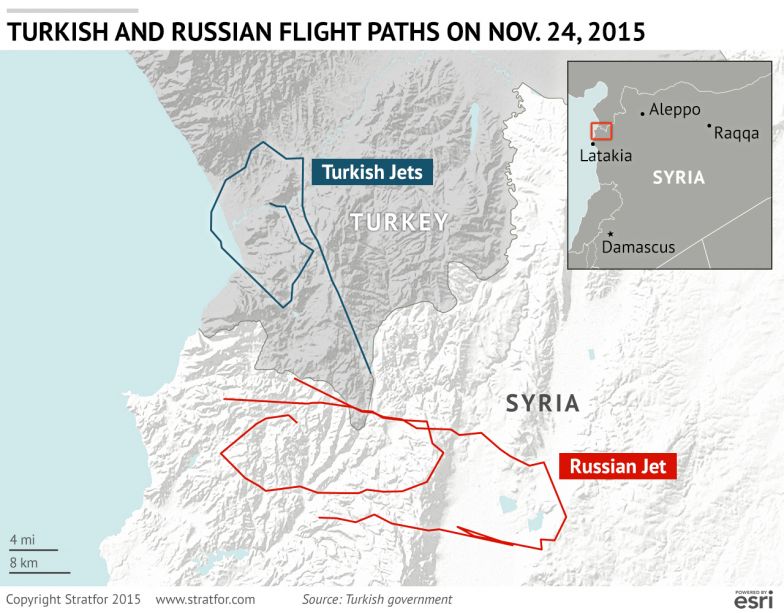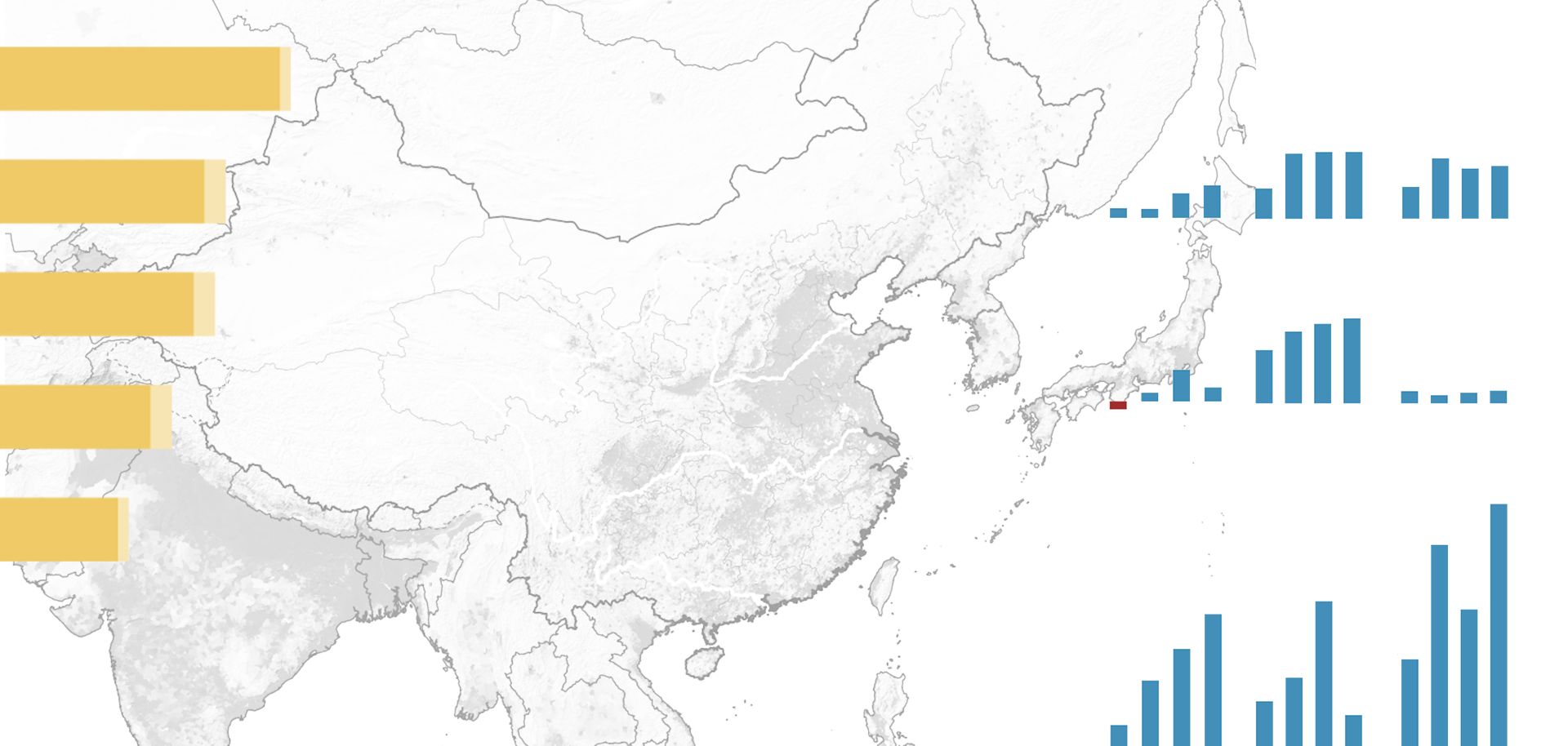
A Russian Su-24 fighter jet was shot down near the Turkish-Syrian border on Nov. 24. According to a statement issued by the General Staff of Turkey, the downed warplane was warned 10 times in five minutes by two intercepting Turkish F-16s while the Su-24 was flying over the town of Yayladagi in Hatay province. The Russian Defense Ministry claims to have "objective monitoring" that proves the aircraft was flying over Syrian territory only, at an altitude of 6,000 meters (nearly 20,000 feet). Russia also claims the crash was caused by gunfire from the ground. Turkey has acknowledged that it is responsible for downing the Russian aircraft. However, the two sides continue to dispute exactly where and when it was shot down.
Preliminary information suggests the two pilots of the Su-24 ejected and were taken hostage by opposition rebels. Turkish government officials have reported the pilots are alive and Turkey has been working to secure their release. However, local Turkmen rebels are claiming the pilots were shot as they descended. A video with a Free Syrian Army logo shows a group of men walking up to a heavily forested area where a yellow parachute landed.
Russian aircraft have increased the intensity of their operations across Syria, targeting both Islamic State and Syrian rebel forces. Turkey has previously warned Russian warplanes it claims were violating Turkish airspace, but this marks the first time Turkish forces have shot one down. The Pentagon has called the downing of the Russian Su-24 fighter jet a sovereign act of self-defense by Turkey.
Fallout from the incident is inevitable. While it will not bring an end to coalition airstrikes against the Islamic State, it will undermine any attempt to resolve the Syrian conflict. It will also raise the risk of aerial clashes over Syria. Moreover, the United States, Turkey and other coalition partners will be far more wary about Russian or loyalist aircraft they encounter over Syria. Coalition forces may also modify the structure of the strikes to include more protection against any potential action by Russian or Syrian government aircraft.



